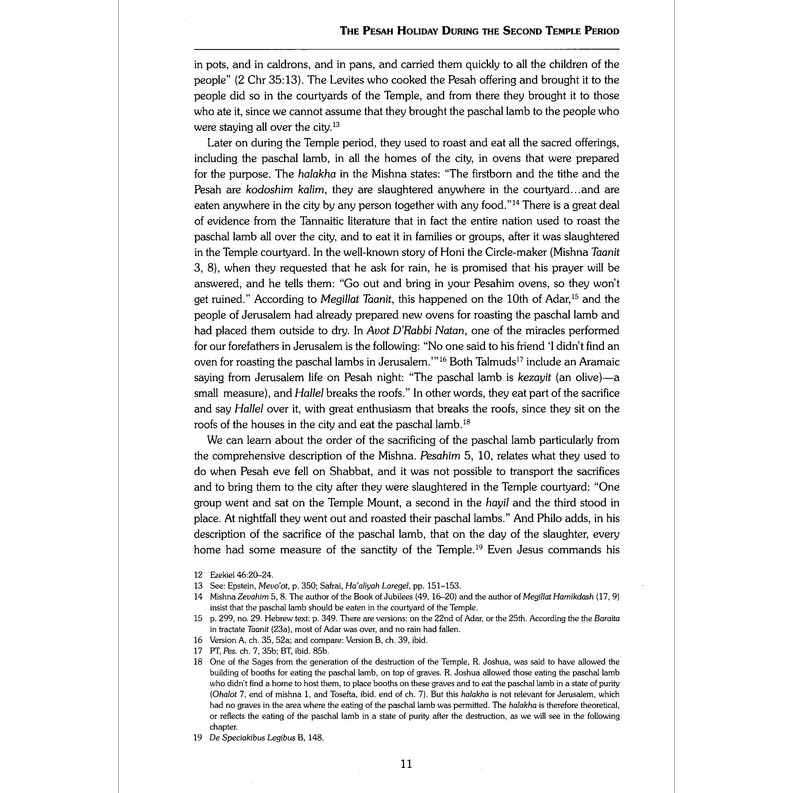Haggadah of the Sages from Carta
Haggadah of the Sages from Carta
SKU: PB400
Couldn't load pickup availability
Haggadah of the Sages traces the progression of the Haggadah, based on the hundreds of Geniza fragments, manuscripts, and commentaries. The commentary accompanying the Haggadah combines early interpretations with modern research methods.
"The Passover (Pesah) Haggadah is a concise expression of the entire world of Judaism, containing all its principal elements. It reflects the faith, hopes, and longing for the redemption of the Jewish people, and it identifies with the historical experience: "In every generation, each person must regard himself as if he himself had come out of Egypt." The historical perspective is combined with study, with an emphasis on familial and public experiences. The Haggadah reflects the reaction of the nation to the world around it and to the gentiles who "devoured Jacob and laid waste his dwelling place." The blessings, prayers, and study are conducted with the active participation of all the members of the family-the men, the women, and the children."
For generations the Passover Haggadah has been the Jewish text most read and studied by observant Jews. Hundreds of commentaries have been written on the Haggadah, and it has been printed in thousands of editions. The fundamental premise of this study is that, in the time of the Second Temple, the Seder night was not celebrated in the way it is known today. In Jerusalem, the Passover sacrifice was eaten with matzah and maror as Hallel was being recited, while in other parts of Israel the evening had little or no significance. Only after the destruction of the Temple was the Seder night transformed into a family event within the larger framework of the festival meal, as in ancient times. It was decidedly Jewish in the spirit of the Sages. The study of Torah is at the core of the Haggadah, replacing the role of the paschal sacrifice in olden times. With Torah study came the specific commandments for the festival that could also be implemented after the destruction of the Temple. Some communities even practiced a custom similar to the rite of eating the Passover sacrifice. This study focuses on central values of Judaism suitable for one and all: the hope for redemption directly from God Almighty, righteousness, compulsory Torah study, remembrance of the Exodus from Egypt, and honoring the commandments.
The Haggadah was not formulated all at once. Its beginnings date back to the generation of the sages of Jabneh, in the first century CE, and reaches its final form in the Geonic period (end of the 7th-11th centuries). The last passages were added in Europe during the Middle Ages. Haggadah of the sages traces the progression of the Haggadah, based on the hundreds of Geniza fragments, manuscripts, and commentaries of the Rishonim (11th-15th centuries) and Aharonim (16th century onward). The commentary accompanying the Haggadah combines early interpretations with modern research methods. Moreover, there are extensive introductions to and clarification of the Eretz Israel version of the Haggadah which differs somewhat from the Babylonian version recited today.
Contents:
- The Haggadah Throughout the Generations
- The Sections of the Haggadah
- The Haggadah & Commentary
About the Authors: The authors are father and son. The late Shmuel Safrai (1919-2003) was emeritus professor of Jewish History in the Talmudic Period at The Hebrew University of Jerusalem. His son Ze'ev Safrai, born in Jerusalem in 1948, and an alumnus of The Hebrew University of Jerusalem, is professor in the Martin (Susz) Department of Land of Israel Studies at Bar Ilan University. Both authors, separately and together, published numerous books and articles on Jewish history, culture, and the Land of Israel in the period of the Second Temple, Mishnah, and Talmud.
Featuring:
- Haggadah text in Hebrew and English
- Commentaries
- Illustrations
- Bibliography
- Black & White
Product Details:
-
Language: English
-
Hard Cover
-
280 pages
-
6 1⁄2 × 9 1⁄4 in. (16.5×23.5 cm)
- Weight: 752 g (25.4 oz)
Additional Information
Additional Information
Share



















